Cooking spinach can be a delightful experience, adding a vibrant green touch to your meals. However, there are common pitfalls that can transform this leafy green into a less than ideal side dish. From the way you wash it to how you choose to prepare it, each step matters.
We explore these errors and offer advice on perfecting your spinach cooking skills, ensuring every bite is delicious. Whether you’re a beginner or a seasoned chef, avoiding these mistakes can elevate your culinary creations and make spinach a staple in your home kitchen.
1. Not Rinsing Leaves Thoroughly
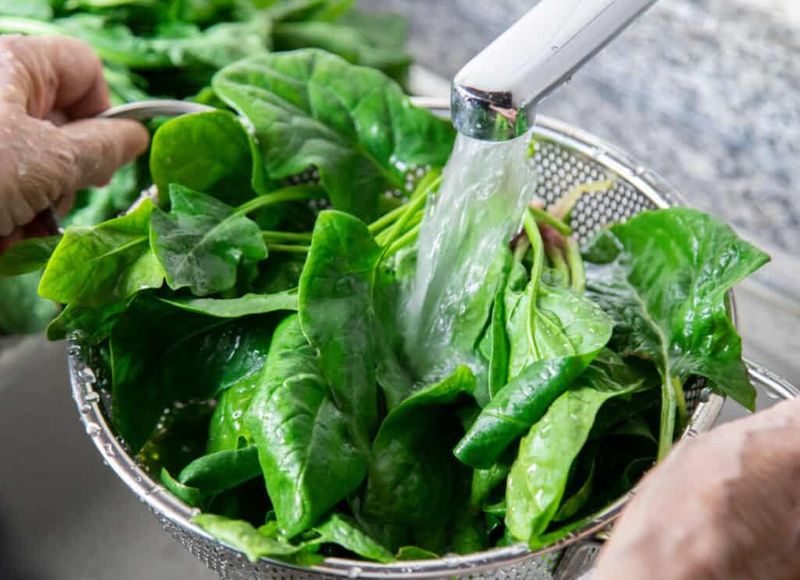
Imagine biting into a gritty piece of spinach—it could ruin your meal. Washing spinach thoroughly is crucial to remove dirt and pesticides. Many people rush this step, leading to unpleasant textures. Use cold water and take your time to gently agitate the leaves, ensuring every nook is clean.
Consider using a salad spinner to dry them gently without bruising the delicate leaves. This step not only cleanses but also enhances the spinach’s natural crispness, preparing it perfectly for your culinary endeavors. Pay special attention to curled leaves where dirt hides most.
2. Cooking Baby Spinach Instead Of Mature Spinach
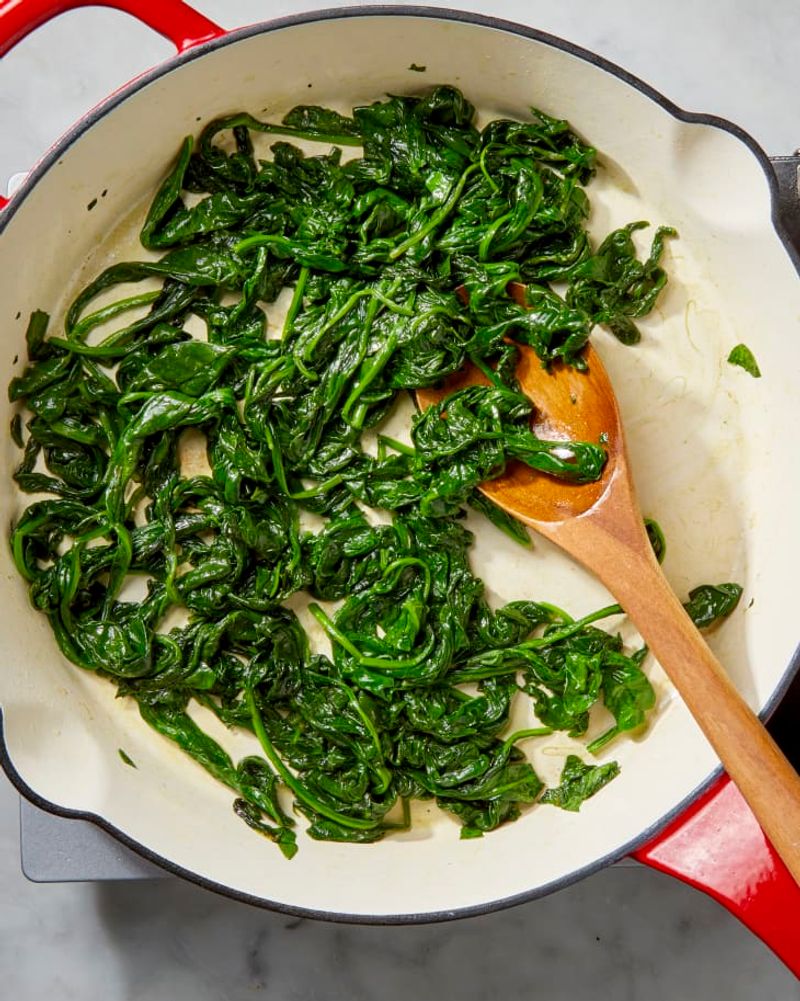
Baby spinach might be tender, but it lacks the robust flavor of mature spinach. Many cooks mistakenly swap these varieties, leading to a milder dish than intended. Each type has its unique qualities; mature spinach offers a stronger taste and stands up better to cooking.
When seeking depth in your dish, opt for the mature version. It holds its texture and adds a vibrant taste, complementing the other ingredients. Don’t be swayed by the cute name of baby spinach—it often wilts too quickly, losing its appeal.
3. Storing Spinach Improperly
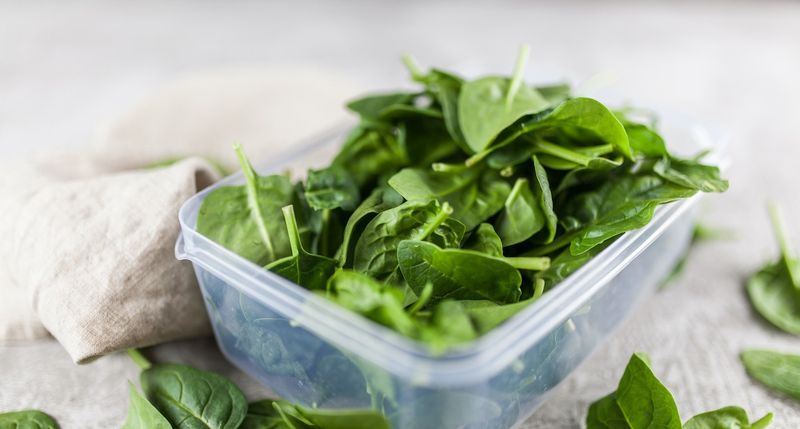
Storing spinach like any regular green leads to disappointing results—wilted and slimy leaves. Proper storage is key to maintaining freshness. Use a paper towel to absorb excess moisture and place the spinach in an airtight container.
This method prolongs its life, keeping it ready for your next meal. Avoid squashing it with heavier items in the fridge, as this bruises the leaves. By taking these simple steps, you’ll always have crisp greens at your disposal, ready to elevate any dish with their vibrant presence.
4. Not Cooking Enough Spinach
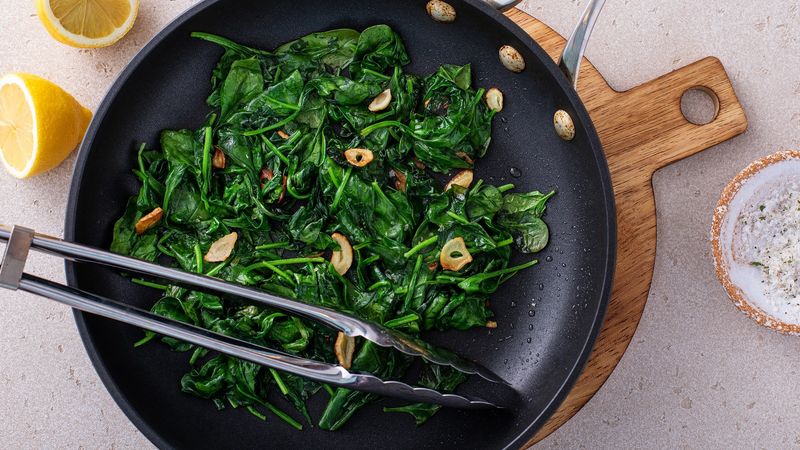
Spinach is notorious for shrinking when cooked, leaving you with far less than expected. Many home cooks underestimate how much they’ll need. Start with a generous amount to ensure ample servings.
Watching a heaping pile reduce to a small portion can be perplexing, but remember—spinach’s high water content causes this transformation. To counter this, plan ahead and buy more than you think you’ll need. This way, everyone gets to enjoy its vibrant flavor without scrambling for additional sides last minute.
5. Not Blanching The Leaves First
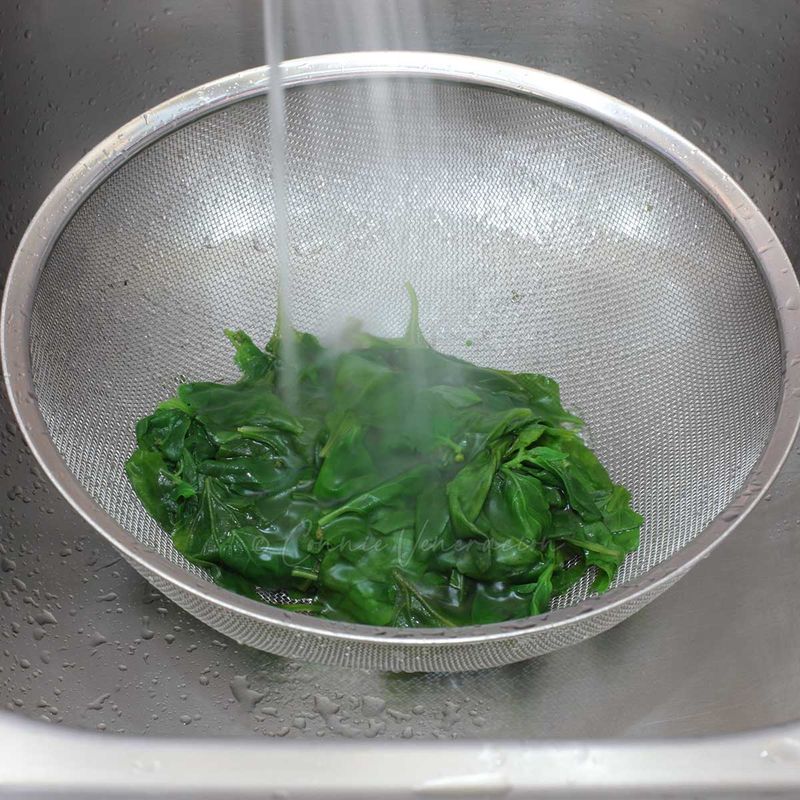
Blanching spinach is a step often overlooked, yet it brings out a brighter color and tender texture. This quick process involves boiling the leaves briefly, then plunging them into ice water. This not only preserves their vibrant hue but also aids in removing potential bitterness.
It’s a trick used by professionals to maintain the vegetable’s appealing look and taste. Next time you prepare spinach, spare a few extra minutes for blanching; it will make a noticeable difference in the final dish.
6. Overlooking Frozen Spinach
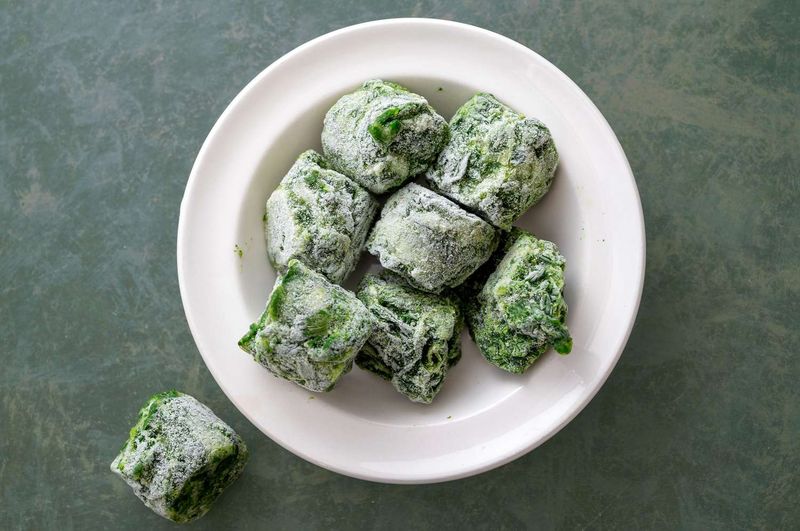
Frozen spinach is a convenient option that many disregard, yet it’s packed with nutrients and flavor. Don’t be quick to dismiss it. It offers consistent taste and texture, perfect for soups and casseroles. Plus, it’s pre-washed and pre-cooked, saving you time.
Frozen spinach can be a great time-saver, especially when you’re in a pinch. It’s often more economical, allowing you to enjoy spinach year-round. Explore recipes that cater to this convenient ingredient, and discover its untapped potential in your cooking repertoire.
7. Under Or Overseasoning Your Spinach
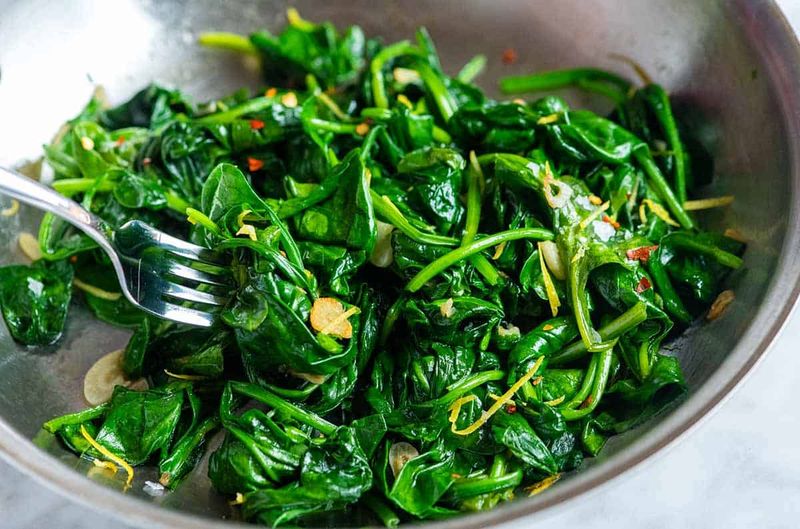
Seasoning is what transforms a simple dish into something extraordinary. Spinach, with its mild flavor, can often fall flat without the right touch. Experimenting with different herbs and spices can elevate its taste. Be cautious; both under and over seasoning can ruin the dish.
Start with a light hand and taste as you go. Consider incorporating garlic, nutmeg, or a splash of lemon juice to enhance its taste. Remember, seasoning is personal—tailor it to your preferences and let each bite be a flavor revelation.
8. Not Sorting Out Bad Leaves And Tough Stems
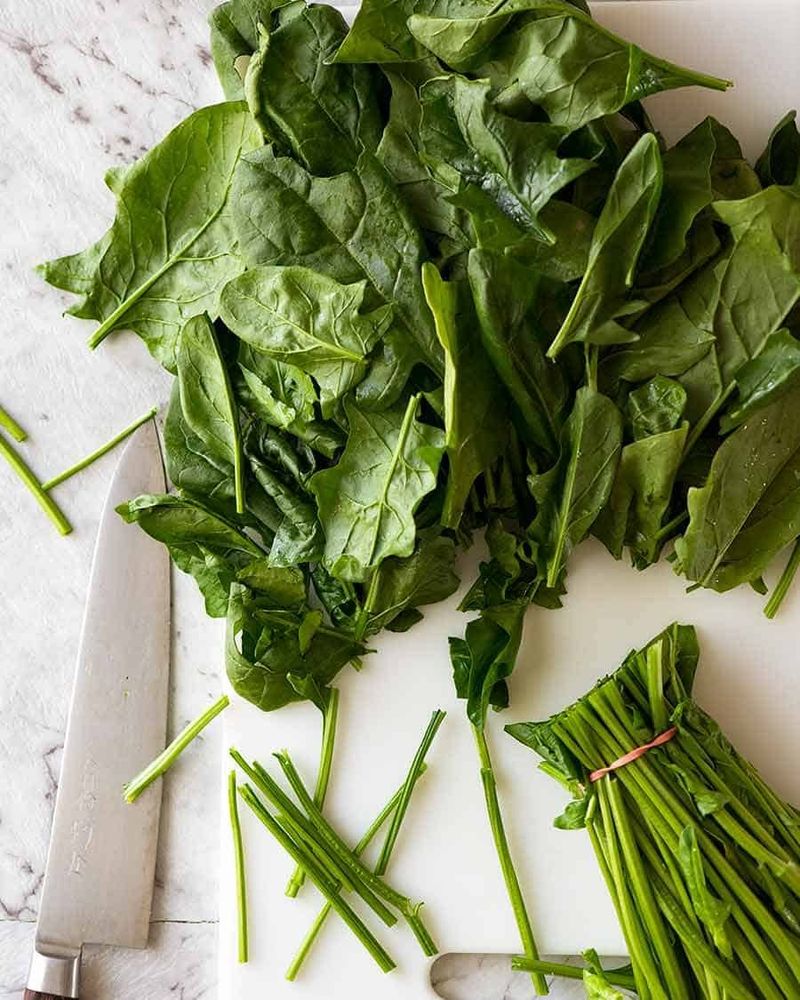
Sorting spinach might seem tedious, but it’s essential for a quality dish. Neglecting to remove yellowing leaves or tough stems can lead to a bitter taste and unpleasant texture. Spend a few moments checking through your bundle before cooking.
Focus on vibrant, crisp leaves for the best results. Removing imperfections ensures that only the best parts make it to your pan. This simple step can drastically improve the overall dining experience, making your spinach dish not only look better but taste deliciously fresh.
9. Not Wringing Out Or Draining Moisture After Cooking
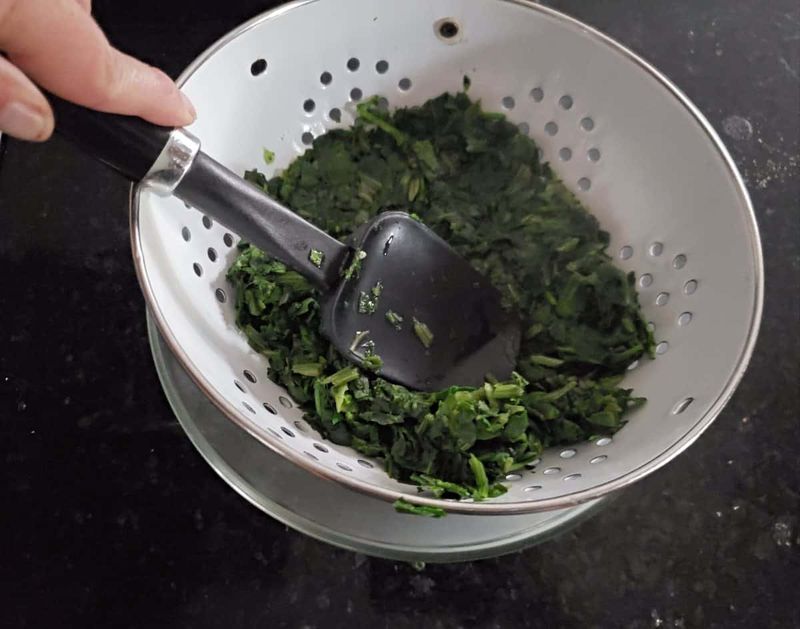
Excess moisture can turn your spinach into a soggy mess. After cooking, it’s vital to drain off any water. Use a clean kitchen towel to gently wring out the cooked leaves, preserving their texture.
This step is crucial, especially if you’re adding spinach to dishes like quiches or pasta, where moisture can be detrimental. By properly draining, you’ll ensure a vibrant, crisp bite, enhancing both the look and taste of your creation. Don’t skip this step; it’s a game-changer in achieving perfect spinach dishes.
10. Letting Spinach Steam After Cooking
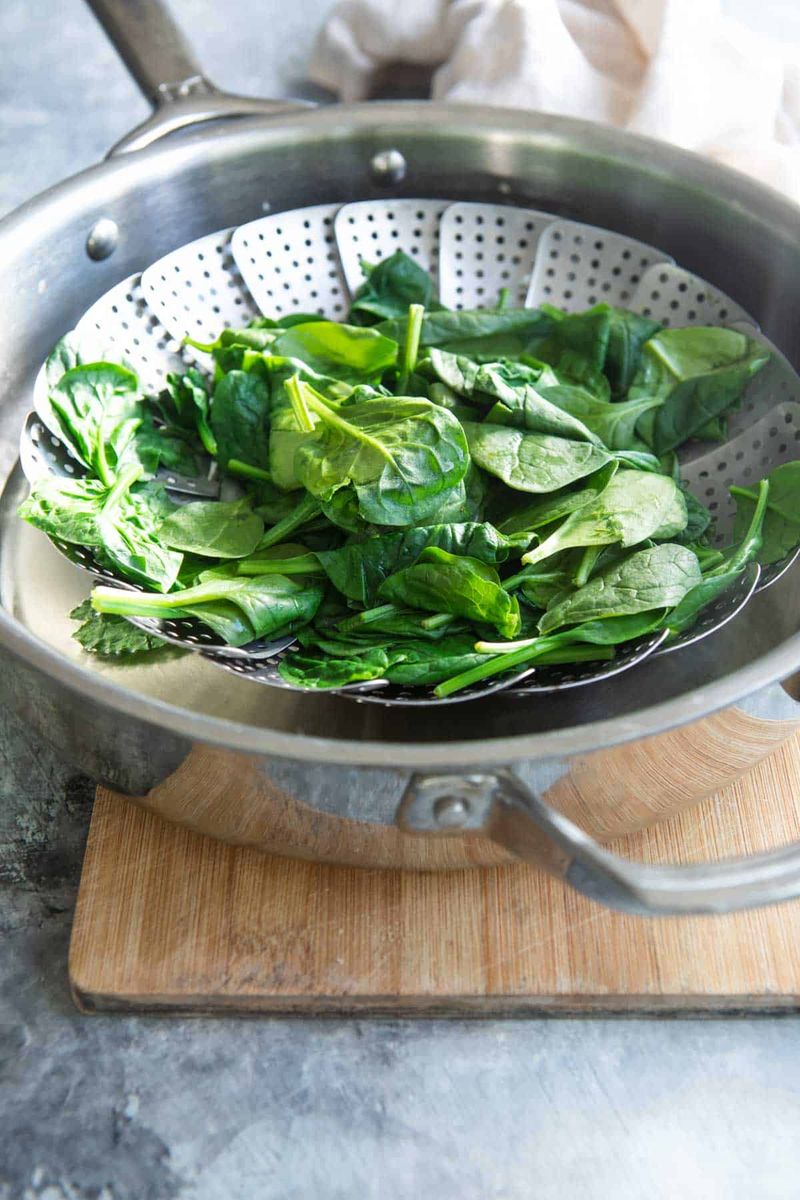
After cooking, spinach continues to release steam, which can leave it soggy. To avoid this, promptly transfer your cooked spinach to a plate or colander. This stops the cooking process and prevents unwanted mushy textures.
By allowing the steam to escape, you’ll maintain the vibrant color and fresh taste of the leaves. It’s a simple adjustment, yet one that makes all the difference. So next time, remember to act swiftly post-cooking for perfectly tender spinach that retains its delightful green hue.
11. Overcooking Your Spinach
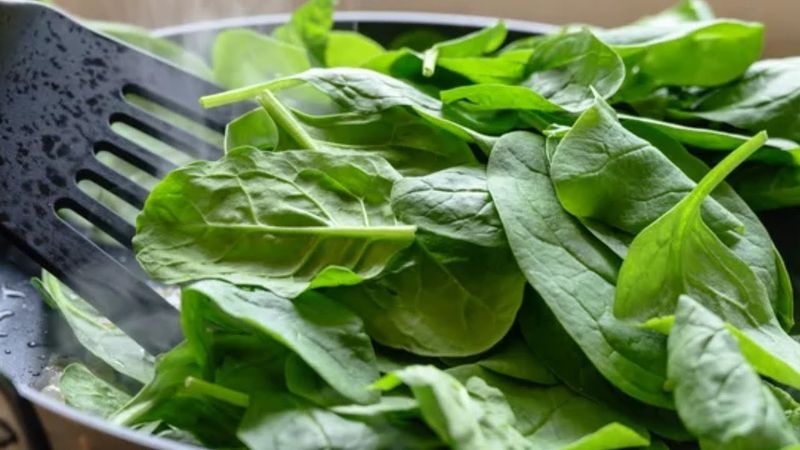
Overcooked spinach loses its vibrant color and turns into a mushy mess, losing essential nutrients and flavor. Timing is everything. Spinach cooks quickly, often needing just a few minutes to reach perfection. Keep a watchful eye and remove it from heat as soon as it’s wilted.
This preserves both its nutritional value and appealing texture. If you’ve ever been disappointed by a dull, lifeless pile of greens, consider adjusting your cooking time. Your taste buds will appreciate the enhanced freshness and flavor.
12. Cooking Spinach The Same Way Every Time

Variety is the spice of life, even in cooking. Always preparing spinach the same way can become monotonous. Explore different methods—sautéing, creaming, or tossing it fresh into salads. Each technique offers unique textures and flavors.
By diversifying your approach, you’ll discover new ways to enjoy this versatile green. Trying something new not only keeps meals exciting but also expands your culinary skills. Embrace creativity in the kitchen, and let spinach surprise you with its adaptability and delicious potential.
Leave a comment